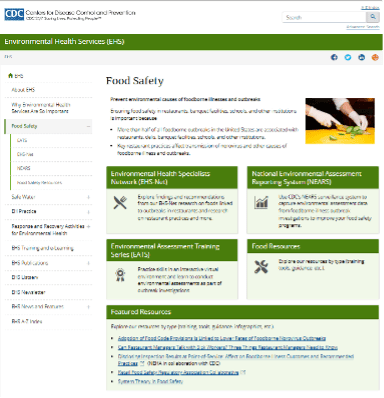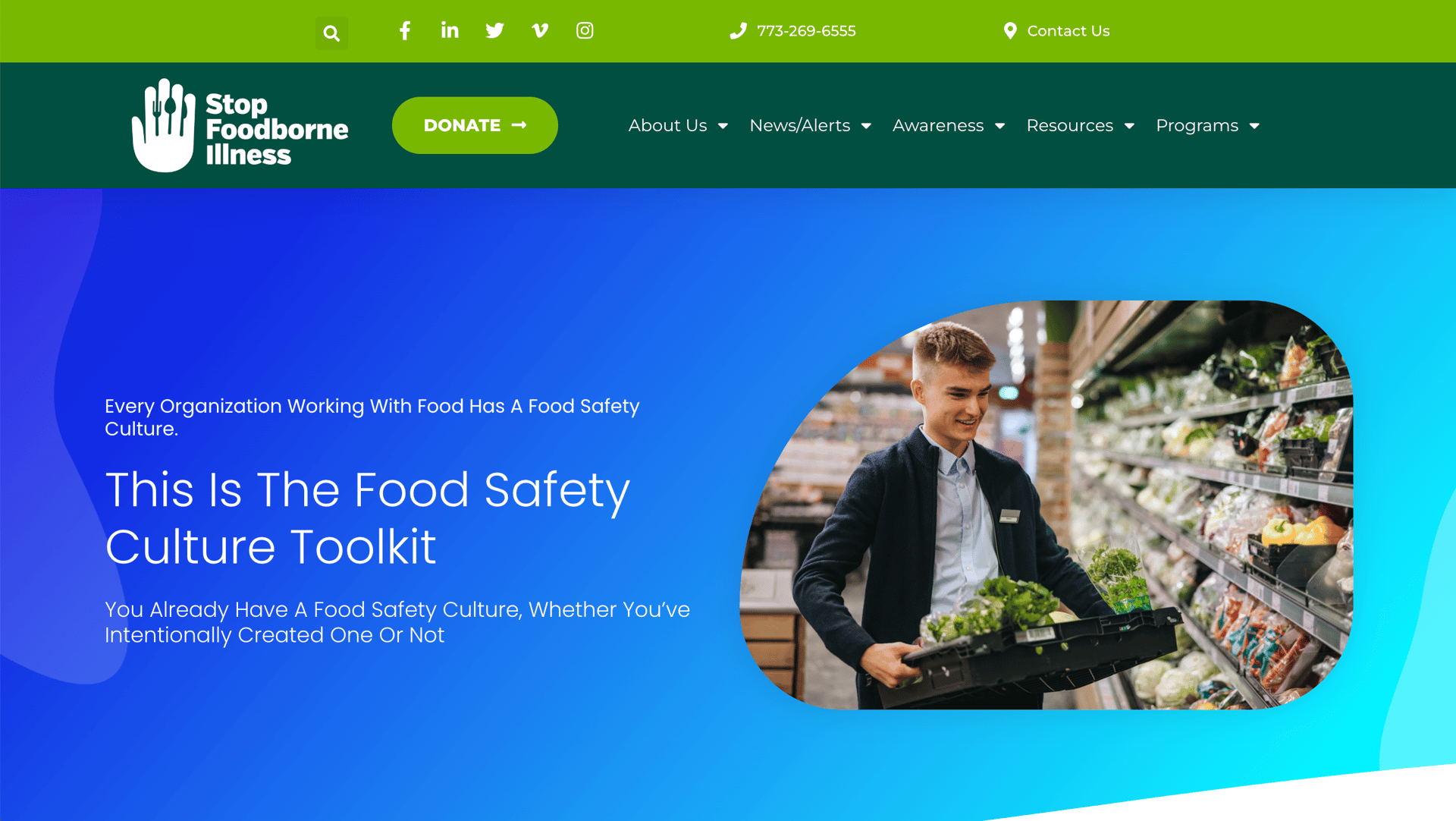
SCROLL
DOWN
WHO Adopts New Global Strategy for Food Safety
Image credit: Dr_Microbe/iStock / Getty Images Plus via Getty Images

At the 75th Session of the World Health Assembly, World Health Organization (WHO) Member States approved the new WHO Global Strategy for Food Safety 2022–2030 (GSFS). The strategy addresses current and emerging food safety challenges, takes into consideration new technologies, and includes innovative approaches for strengthening food safety systems. The strategy provides guidance for Member States in their efforts to strengthen their national food safety systems and promote regional and global cooperation under the "One Health" approach.
WHO also stressed the urgency of addressing antimicrobial-resistant pathogens in the food system, estimating that antimicrobial resistance (AMR) will cost 10 million lives and $100 trillion dollars by 2050 if no proactive solutions are taken. A "One Health" approach to food safety not only helps mitigate the public health crisis that is AMR, but can also contribute to the achievement of the United Nations' Sustainable Development Goals, of which food safety is a factor.
The updated strategy outlines five interlinked and mutually supportive strategic priorities:
- Strengthening national food controls systems
- Identifying and responding to food safety challenges that arise with the evolution of food systems
- Increasing the use of scientific evidence and risk assessments in decision-making
- Strengthening stakeholder engagement and risk communication
- Promoting food safety as an essential component of trade.
GSFS also outlines a four-step strategy for Member States to develop, update, and implement their national food safety strategies, which includes: 1) conduct a situation analysis, 2) develop a national strategy and action plan on food safety, 3) implement the national strategy and action plan, and 4) conduct regular reviews of the implementation and action plan, and adjust the strategy as appropriate.
The U.S. Food and Drug Administration (FDA) has issued a final guidance, titled, FDA Oversight of Food Covered by Systems Recognition Arrangements: Guidance for Food and Drug Administration Staff, that addresses adjustments FDA has made to its regulatory oversight activities for imported food products covered by a Systems Recognition Arrangement (SRA). SRAs are made between another country's food safety authority and FDA when the other country has proven to produce similar food safety outcomes to the U.S. through an FDA assessment.
SRAs allow FDA to leverage regulatory partners' food safety systems, reallocate resources based on risk, and enhance information-sharing related to food safety issues. FDA has signed SRAs with participating agencies in Australia, Canada, and New Zealand, and is currently assessing food safety systems of certain countries in the EU. The final guidance outlines adjustments to FDA’s regulatory oversight activities for covered foods imported from a country with an active SRA, such as:
- Inspections of food establishments in countries with an active SRA
- Automated screening, risk targeting, and review of imported food
- Examination and sampling of imported food
- Relevance of importer verification programs
- Regulatory compliance actions.

FDA Issues Final Guidance on Systems Recognition Arrangements
FDA Releases New Food Fraud Webpage
The U.S. Food and Drug Administration (FDA) has released a new website on economically motivated adulteration (EMA), including food fraud. The purpose of the website is to keep businesses and consumers informed on the latest food fraud developments.
The website includes links on how to report food fraud; examples of food adulteration; how food fraud is detected and monitored; enforcement and legal consequences, such as recalls, seizures, and import refusals; guidance documents to assist manufacturers and importers; and a list of import alerts.
EMA occurs when "someone intentionally leaves out, takes out, or substitutes a valuable ingredient or part of a food," according to FDA. EMA also occurs when a substance is added to a food to make it appear better or of greater value.
Food fraud is a common type of EMA that FDA investigates, but EMA also occurs with other products, including animal food and cosmetics. Some types of EMA are also misbranding violations. Estimating how frequently food fraud occurs or its exact economic impact can be challenging because food fraud is designed to avoid detection. Outside estimates by experts have found that food fraud affects 1 percent of the global food industry at a cost of approximately $10–$15 billion per year, although more recent expert estimates peg the cost as high as $40 billion per year.
Food fraud can also lead to major health issues and even death. Some examples include lead poisoning from adulterated spices and allergic reactions to a hidden or substituted ingredient that contains a small amount of just one food allergen.
Click here to visit FDA’s new EMA website.
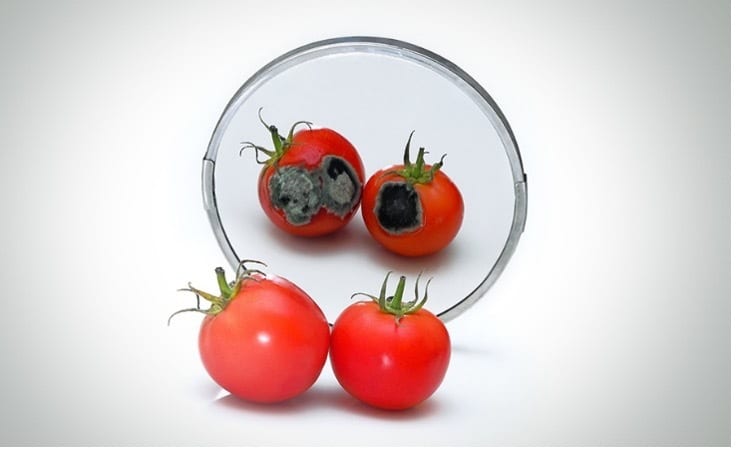
Image credit: Dr_Microbe/iStock / Getty Images Plus via Getty Images
A study published in Environmental Research Letters suggests that aflatoxins will become increasingly prevalent in U.S. corn production due to the effects of climate change. Based on the results of 16 climate change models, over 89.5 percent of corn-growing countries in 15 states may experience heightened aflatoxin contamination in 2031–2040, compared to 2011–2020.
Aflatoxin contamination of corn is caused by the fungi Aspergillus flavus and Aspergillus parasiticus. Hot and dry conditions encourage fungi spores to be airborne, which allows for the contamination of crops.
Due to different regional climates in the U.S., aflatoxin perennially affects corn grown in the South, but is not common in the Midwest Corn Belt or northern states. However, the study suggests that future increases of aflatoxin will be a cause for concern more in the Corn Belt and northern states than in southern states, as aflatoxin-causing fungi are inactivated at very high temperatures.
The study's researchers state that the grain industry can mitigate the risk of aflatoxin contamination by storing corn harvests in cool, dry places and irrigating crops as much as possible. Researchers also suggest that crop production may have to move further north or south, where the climates are cooler or wetter, to reduce aflatoxin risk. This would pose a problem for generationally owned farms.
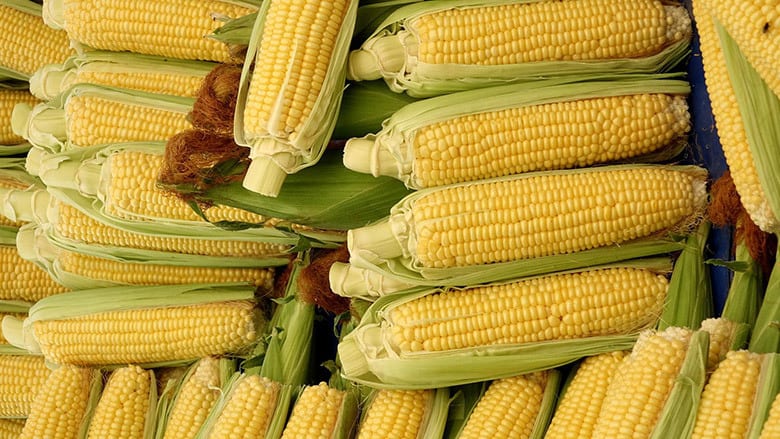
Risk of Aflatoxin Grows for U.S. Corn
JERMA Suggests STEC Controls for Meat and Dairy
The Joint Food and Agriculture Organization of the United Nations (FAO) and World Health Organization (WHO) Expert Meeting on Microbiological Risk Assessment (JERMA) published an executive summary of its meeting on Shiga toxin-producing Escherichia coli (STEC) associated with meat and dairy products. The meeting was held to provide scientific advice on pre- and post-harvest control measures for STEC in animals and foods of animal origin.
STEC Control in Live Animals on Farms
To manage STEC in livestock on farms, JERMA proposes the use of approaches based on Good Agricultural Practices (GAPs) and Good Hygiene Practices (GHPs). Accepted GAPs and GHPs that are effective in reducing STEC include maintaining clean bedding, housing, and drinking water for animals; appropriate animal density and biosecurity measures; effective sanitation of facilities; and proper disposal of manure.
JERMA assessed several dietary and herding methods for controlling STEC in cattle. One recommended approach is the use of probiotics, as well as colicins or sodium chlorate, in feed. JERMA also suggests that the stress of long-distance transport can increase the fecal excretion of STEC in cattle, and therefore warns against transporting cattle for slaughter. JERMA also supports the use of certain vaccines to reduce the fecal excretion of STEC. JERMA does not recommend the use of antimicrobials in cattle feed to reduce STEC prevalence. JERMA suggests that the STEC control measures that are effective for cattle are also effective for small ruminants, such as goats and sheep. No interventions for the control of STEC in live pigs was evaluated.
STEC Control in Meat Processing Facilities
Processing measures for the control of STEC that JERMA promotes with medium to high levels of confidence include steam vacuuming of visible fecal contamination on carcasses, use of a hot potable water carcass wash, steam pasteurization followed by 24 hours of air chilling, the use of knife trimming to remove carcass tissue contaminated with fecal material, and antimicrobial dips of primals and trims. Additionally, high-pressure processing (HPP), gamma irradiation, and electron beam sterilization may provide significant reductions of STEC in ground beef and retail packs. JERMA points to the use of hot water, lactic acid, and other organic acid sprays for controlling STEC in small ruminant meat processing
STEC Control in Dairy
JERMA states that, as is the case for livestock rearing and meat processing, GHPs and GAPs are also crucial in controlling STEC in dairy, such as temperature control and hygiene during dairy harvesting and transportation. During processing, pasteurization is highly effective for controlling STEC. The use of bacteriophages, HPP, gamma irradiation, and electron beam sterilization are also possible control methods against STEC in dairy processing. Finally, active packaging and electron beam sterilization may be useful in the post-manufacturing stage.
STEC Monitoring and Detection
JERMA stresses the importance of sampling and testing meat and dairy for STEC. Since STEC is often present at low levels in foods, culture enrichment of food samples in critical. Polymerase chain reaction (PCR) testing methods are quick, low-cost, commercially available, and effective in detecting STEC. The isolation of STEC by culture-based methods or immunomagnetic separation can also be valuable in confirming PCR-positive results.

Image credit: Dr_Microbe/iStock / Getty Images Plus via Getty Images
A recent study found room for improvement in Salmonella detection methods in poultry, and provides a framework for a new detection method using advanced technology. Through the use of CRISPR-SeroSeq technology, researchers discovered multiple strains of Salmonella in live bird samples that previously went undetected by traditional testing methods.
The study analyzed national Salmonella monitoring data collected from 2016–2020 by the U.S. Department of Agriculture's Food Safety and Inspection Service. The initial analysis suggested that Salmonella strains that are found on farms are not always the same as the strains found in poultry processing plants. S. Kentucky, which is typically not associated with human illness, accounted for 80 percent of Salmonella found on the farm, whereas strains that are more prone to causing sickness—S. Infantis, S. Enteritidis, and S. Schwarzengrund—were found in samples from processing plants.
The incongruence between Salmonella on farms and in poultry processing plants and products poses a challenge for the poultry industry when choosing appropriate vaccinations and other control strategies. However, the researchers are confident that their study provides a new framework for how to identify previously undetectable Salmonella strains, which may facilitate more effective surveillance of Salmonella in poultry.

Some Salmonella Strains Undetected by Traditional Testing Methods
Codex Commission Drafting Guidance on Food Fraud
The Codex Alimentarius Commission is developing a new guidance on food fraud that is expected to be published in 2024 or 2025. While guidance for food fraud exists, there is a need to develop definitions and update Codex guidance to address "horizontal" issues and reflect current food fraud initiatives.
The Codex Committee on Food Import and Export Inspection and Certification Systems has formed a working group that is dedicated to developing the new guidance. The working group will be chaired by the U.S. with co-chairs from China, the EU, the Islamic Republic of Iran, and the UK.
The Global Food Safety Initiative (GFSI) will also serve as an official observer to Codex, providing input and recommendations through its GFSI Codex Working Group. Multiple draft versions of the guidance under development will be issued between now and its completion in 2024 or 2025. The final draft will be submitted for approval to the Codex Alimentarius Commission.

Image credit: Dr_Microbe/iStock / Getty Images Plus via Getty Images
Nicola Stanley, Ph.D., Communications Director for the Global Harmonization Initiative (GHI), has joined the Editorial Advisory Board of Food Safety Magazine. A researcher, communicator, and educator with a broad understanding of the global food and beverage industry, Dr. Stanley enjoys working at the interfaces of people, product, information, and data.
Over the past 25 years, she has worked in consultancy and management roles, as well as senior managerial roles within a foods multinational. She has a passion for food science, holding a B.Sc. degree in food science and a Ph.D. in sensory and dairy technology. Dr. Stanley is a visiting lecturer to universities and is involved in developing and delivering B.Sc. and M.Sc. course units and workshops including food systems management, food quality assurance, food analysis, sensory analysis, food product development, and prerequisite skills and behaviors for the food industry.
In 2021, Dr. Stanley joined the Global Harmonization Initiative (GHI) as Communications Director. With the overall aim of consensus building on the science of food regulations and legislation, recent high-profile projects include the introduction of a GHI series of monthly seminars and the launch of a global whistleblower system for the anonymous reporting of serious food safety incidents.

Stanley Joins FSM Editorial Advisory Board

Doug White has been appointed CEO of PSSI, succeeding Dan Taft, who will retire from PSSI at the end of 2022 after six years in his executive leadership role and 23 years with the company. Monty Christenberry was promoted to COO of PSSI.

Mars Inc. has appointed Poul Weihrauch, Mars Petcare Global President, to serve as CEO of the company starting in September, as industry veteran Grant Reid is retiring after eight years in the role and over three decades with the company.
Cultivated meats company Aleph Farms has appointed Yifat Gavriel as Chief of Regulatory Affairs and Quality Assurance.
Kemin Industries has named Jerry Savino as Technical Services Manager for Bakery in the Kemin Food Technologies—North America business unit. Savino will provide internal and external technical support services as Kemin continues to expand its portfolio of clean-label ingredient solutions that help bakers extend shelf life to keep products fresh.

Sammy Duda has been named CEO-elect of Duda Farm Fresh Foods.
Global packaging solutions provider Selig Group promoted Adam Sheridan to the role of President. Selig Group's President and CEO, Steve Cassidy, will step away from day-to-day activities and retain the role of CEO.
TuffWrap Installations Inc., a supplier of dust and debris containment services, has appointed Daniel J. Schmidt as the National Sales Director.
Aaron Bremer has rejoined Thermodyne Foodservice Products in the role of National Sales Representative and Corporate Chef after serving as Thermodyne's Corporate Chef from 2017 to 2021.


WHITE
DUDA
SHERIDAN
SCHMIDT
GFSI Summarizes Review of Technical Equivalence
The Global Food Safety Initiative's (GFSI's) Technical Equivalence (TE) program is a category of the GFSI benchmarking process that is dedicated to government-owned standards. Since TE's launch in 2014, GFSI stakeholders have raised concerns over TE's impact on GFSI's purpose of "safe food for people everywhere." To address stakeholder concerns, in 2020, GFSI decided to conduct a strategic review of TE's place within GFSI's activities, as well as the TE process. The review closed in December 2021, and GFSI recently published a summary of the review.
Stakeholders agree that TE improves overall safety due to its foundation in Codex Alimentarius and ISO guidelines. Acknowledged benefits of TE included improved stakeholder status and market access due to GFSI affiliation. However, stakeholders also reported a limit to their increased market access because the TE process did not include a review of standard owners' governances. The most significant challenge reported by respondents was a misunderstanding of the TE process by suppliers and purchasers, which caused confusion between GFSI-recognized certification programs and GFSI-acknowledged standards. Stakeholders suggested that either more should be done to communicate the differences between the two programs and promote the benefits of TE, or that only one GFSI benchmarking process for certification programs should exist.

HelloFresh Receives Black Pearl Award
The popular meal kit provider HelloFresh has been honored with the Black Pearl Award for food safety and quality by the International Association for Food Protection (IAFP). The Black Pearl Award is given annually to one company for efforts in advancing food safety and quality through consumer programs, employee relations, and support of the goals and objectives of IAFP. HelloFresh is being recognized for its intentional efforts to be the industry role model for food safety and quality by building a food safety and quality assurance team and establishing best practices for internal and external operations.

Olymel, a Canadian provider of pork and poultry meats, has announced the opening of its own central microbiology laboratory in Ange-Gardien, Montérégie. The Ange-Gardien facilities were automated and its equipment upgraded to polymerase chain reaction (PCR) technology, which will make analysis methods more efficient and increase information traceability. The new laboratory's analyses will focus on detecting primary pathogens such as Listeria monocytogenes and Salmonella, as well as confirming product shelf life. The laboratory will have the capacity to perform over 100,000 tests per year, which will give Olymel more autonomy to validate processes within the framework of the Safe Quality Food (SQF) certification and enhance the company's quality assurance management. Olymel will also continue to entrust analysis requests and tests that are required by regulatory bodies or Olymel's clients to independent laboratories.
Olymel Opens In-House Microbiology Lab
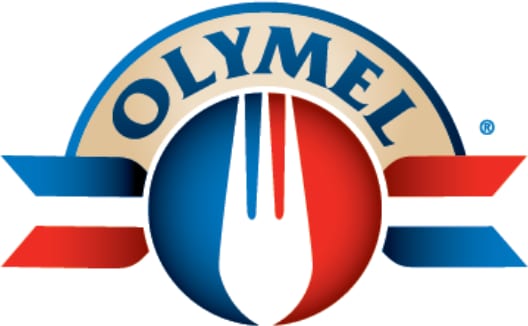
AAMP Announces Video Series on FSIS Appendices A and Bs
The American Association of Meat Processors (AAMP) recently announced an upcoming video series to discuss the proposed changes to The U.S. Department of Agriculture's Food Safety and Inspection Service's (USDA's FSIS') Appendices A and B. The series, titled, "Cooking & Cooling: Alternative Support for Appendix A and B," will launch in June 2022 and cover many of the products that will be affected by the proposed regulatory changes. AAMP states that the videos are intended to aid meat processors and industry in identifying solutions for cooking and cooling that meet the new regulatory requirements as outlined in the 2021 version of Appendices A and B. The video series will debut on AAMP's YouTube video channel in June 2022, and will continue to be released throughout the summer and into the fall. AAMP processor members are invited to submit questions via email about the proposed legislative changes, which outreach specialists will address in the videos. FSIS made the proposed revisions available in the Federal Register on December 14, 2021.

Save Foods Completes Pre-Harvest Application Trials on Citrus Fruits
Save Foods, an Israeli-based agrifood tech company focused on developing and selling eco-friendly products specifically designed to extend the shelf life and ensure the safety of fresh fruits and vegetables, has completed a series of successful trials in conjunction with a leading California academic institution. The study’s results demonstrate that the pre-harvest applications of Save Foods’ treatments are effective in mitigating the presence of decay-causing pathogens on the surface of citrus fruits. According to the company, Save Foods’ post-harvest treatments are effective at maximizing the shelf life and safety of fresh produce, and the recent California studies indicate that growers and packers can benefit further from a pre-harvest application.
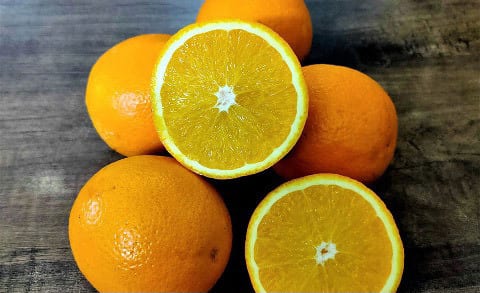
Freshcare FSQ Standard 4.2 Achieves GFSI Recognition
The Global Food Safety Initiative (GFSI), the Consumer Goods Forum’s Coalition of Action on food safety, and Freshcare Ltd. announced that the Freshcare Food Safety & Quality Standard Edition 4.2 has successfully achieved recognition against GFSI’s Benchmarking Requirements Version 2020.1. The recognition encompasses GFSI scopes BI—farming of plants, and BIII—pre-process handling of plant products. The achievement of global recognition ensures that Freshcare remains at the forefront of Australian and international food safety compliance.


ONLINE & OF NOTE
The U.S. Centers for Disease Control and Prevention (CDC) has published a new food safety webpage as part of its resource library for environmental health practitioners and programs. The webpage provides tools, trainings, guidance, and resources for mitigating the spread of foodborne illnesses, as well as links to several CDC food safety programs. Examples of featured resources include theoretical background for food safety systems, networking outlets, and advice for restaurant managers and other food safety professionals. The webpage also features CDC initiatives that environmental health specialists can utilize to improve food safety. These initiatives include the Environmental Health Specialists Network (EHS-Net), the National Environmental Assessment Reporting System (NEARS), and the Environmental Assessment Training Series (EATS), among others.
The CDC has also published a food safety microsite that offers information about the causes and symptoms of foodborne illness, as well as tips for consumers on how to keep themselves and their families from getting sick from food poisoning.
Stop Foodborne Illness, a nonprofit organization dedicated to food safety, has published its Food Safety Culture Toolkit. The toolkit is a webpage that features resources intended to help food organizations identify and improve their food safety culture. The resources included in the toolkit are science-based, consider personal experiences, and are tailored to small- and medium-sized organizations. The toolkit emphasizes that it is important to create an intentional strategy for developing and enhancing a culture of food safety. At present, the toolkit has three, active subpages: Evaluate Your Vision, Define and Exemplify, and Guiding Desired Behaviors. The toolkit is in ongoing development and will feature more resources in the near future, such as case studies, documents, links to useful websites, and others.
